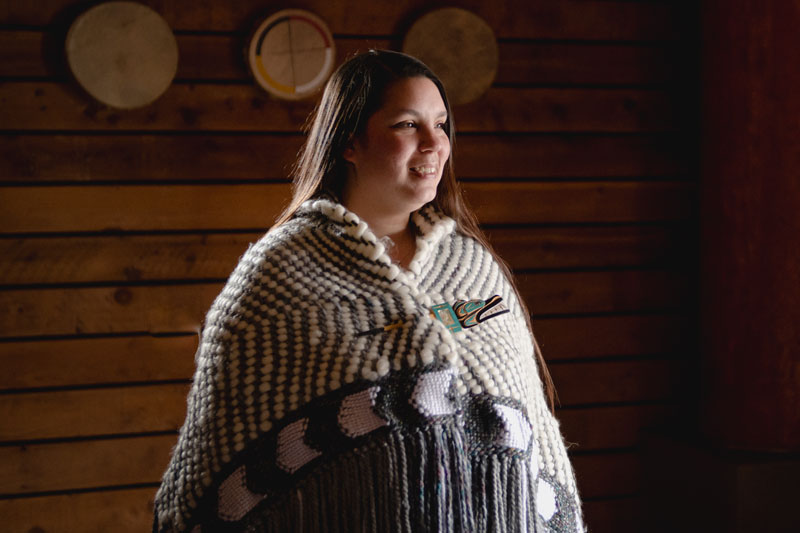My Whistler — A Local Perspective
By David Burke

Name: Allison Burns-Joseph
Occupation: Indigenous Youth Ambassador Program Manager
Since it opened in 2008, the Squamish Lil’wat Cultural Centre (SLCC) has helped make Whistler a go-to place for guests to learn about the unique and vibrant cultures of British Columbia’s First Nations peoples. Cheximiya (Allison Burns-Joseph) has been involved in the cultural and training programs since 2006, even before the SLCC opened; first as a participant in what’s now called the Indigenous Youth Ambassador (IYA) program and for the past several years as the program’s manager.
The centre, which resulted from a partnership of the two Aboriginal groups who share the Whistler Valley as part of their traditional territories, has enjoyed success at least partly because of IYA. The program has trained dozens of Squamish, Lil’wat and other First Nations people aged 16 to 30 in traditional cultural practices as well as public speaking, business, and customer service skills.
IYA participants form a deeper connection with their own cultures through teaching from their Nations’ respected elders and craftspeople. “Having the IYA in-house is a refreshing approach to sharing our culture with the world,” Cheximiya said. “As they are reconnecting with their cultures, they are proud to share it with guests. Some of the youth have become iconic community members, and are recognized in the Whistler community, through the good work they have achieved.”
What opportunities did you have to learn about your culture when you were growing up? Anyone who most helped you on that journey?
I was born and raised in my territory, off-reserve in North Vancouver, where I had little connection to the community. The opportunity came about for me to participate in the Aboriginal Youth Ambassador Program in 2006, and I knew this was my opportunity to learn more about my heritage. I became close to the mentors who shared teaching with us, and Roxy Lewis, in particular was a huge influence to help push me to want to learn and do more in the culture.
How did you first learn about what’s now called the Indigenous Youth Ambassadors program?
Many of my school friends had participated in the program before my intake, and I heard so many good things. When the opportunity came up for another program, I knew it was for me.



How did the opening of the SLCC in Whistler change the program — in terms of both interest and focus?
Before the opening of the SLCC, the program did not have a “home base,” so we utilized partnerships on our land through tourism, customer service and education. Capilano College, Grouse Mountain, and the Adventure Centre in Squamish are some of the partners that helped us on our journey while the SLCC was built. When the SLCC opened in 2008, it was a game-changer as we had a place to call home and full control of the training of the youth on the shared territory of both the Squamish and Lil’wat people. With so many different departments and initiatives, it gives the young people a great opportunity to be a part of so many meaningful projects and try a variety of roles within the organization.
What’s the most rewarding part of the job of managing the young people who take part in the IYA program?
Watching the youth grow over the weeks, months and sometimes years is so meaningful to me. I have worked with people in many capacities during that time, and to see them succeed in life, both at work and personally is invigorating. I have been with the organization since its inception; in that time, I have seen people get married, have children, go back to school, travel and take on leadership roles in the organization and the communities. Some of the graduates of the program have gone on to careers such as chief and council, professional artists, management, teachers, military personnel and first responders.
Do you have a favourite story about how the ambassadors at the centre have helped visitors connect with the Squamish and Lil’wat cultures?
Our organization is very much youth-led. Many guests have come into the SLCC and have interacted with our youth who are leading tours, singing songs, fulfilling orders in the Thunderbird Café, and helping people find the right gift or item in the gift shop. After interacting with our Young Ambassadors, they develop a connection with our communities and gain a better understanding of who we are as Squamish and Lil’wat First Nations. Some guests are so moved about their experience — it brings them to tears.
Visit slcc.ca.

